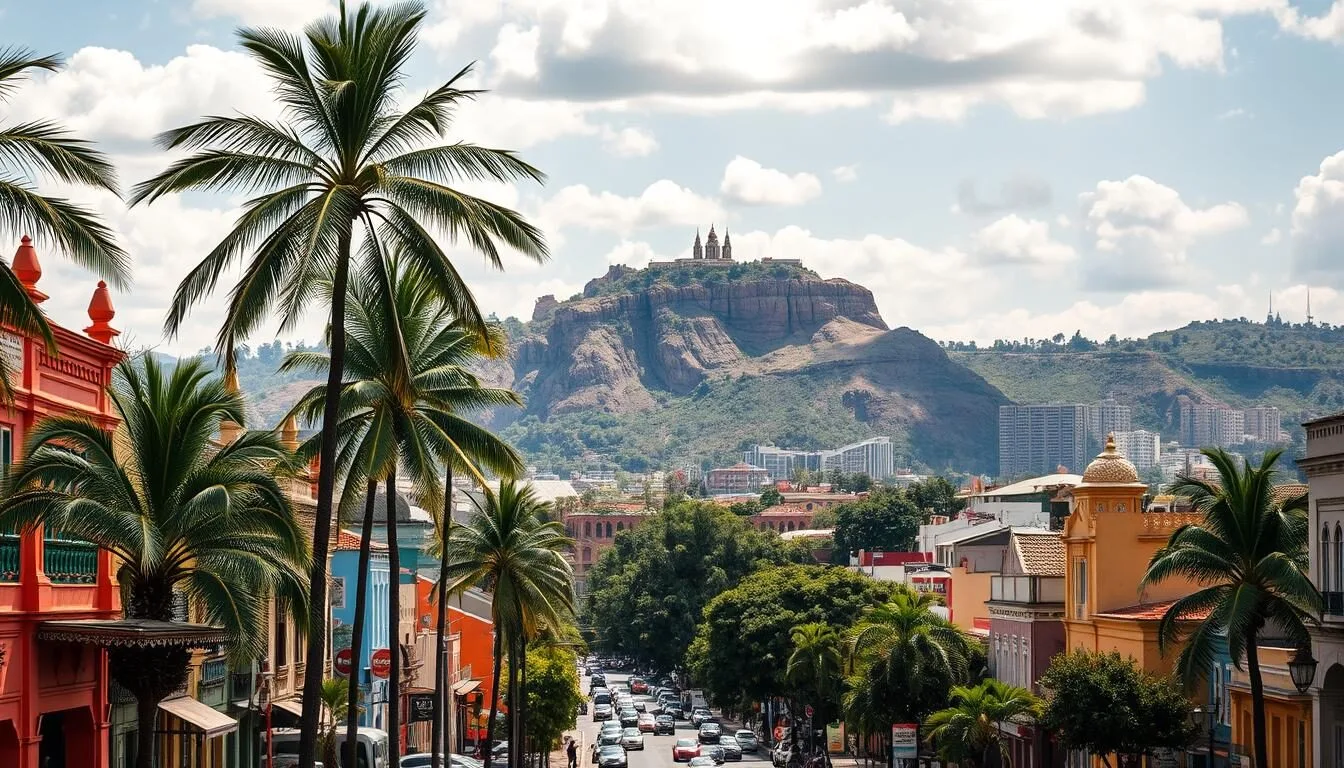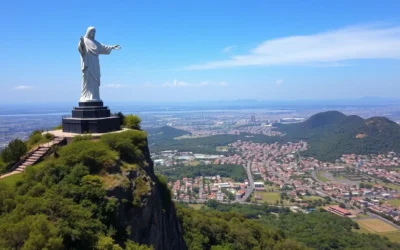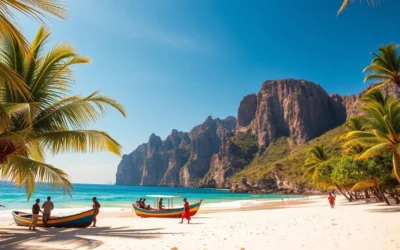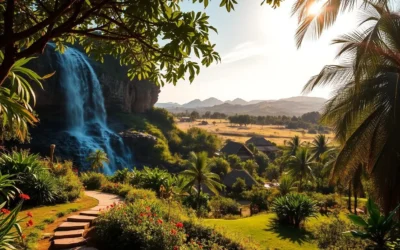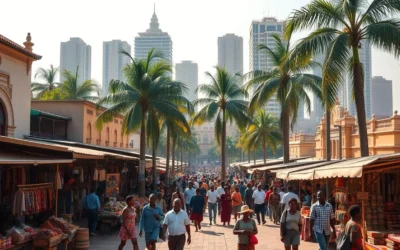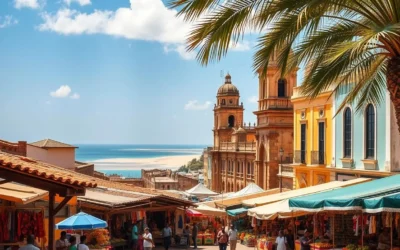✓ Accommodations✓ Flights✓ Rental Cars
Nestled in the southwestern region of Angola, Lubango is a hidden gem waiting to be explored. As the country’s second-largest city by population, it offers a unique blend of cultural heritage and breathtaking natural landscapes.
Located on a steep-sided plateau at an elevation of 5,774 feet, Lubango enjoys a pleasant climate, making it an ideal visit destination year-round. When you experience Lubango, you’ll discover a perfect blend of urban amenities and access to stunning natural wonders.
Discovering Lubango: Angola’s Hidden Gem
As you explore Angola, you’ll discover Lubango, a hidden gem nestled in the southwestern region. This city is a treasure trove of history, culture, and natural beauty.
Location and Climate
Lubango is situated in the Huila province of southwestern Angola, on a high plateau. At 5,774 feet (1,760 meters) above sea level, it’s one of the coolest city in Angola. The elevation creates a temperate climate with temperatures ranging from 8-31°C (46-89°F), making it distinctly cooler than most of Angola. This unique climate allows for the cultivation of crops that are difficult to grow in other parts of the country.
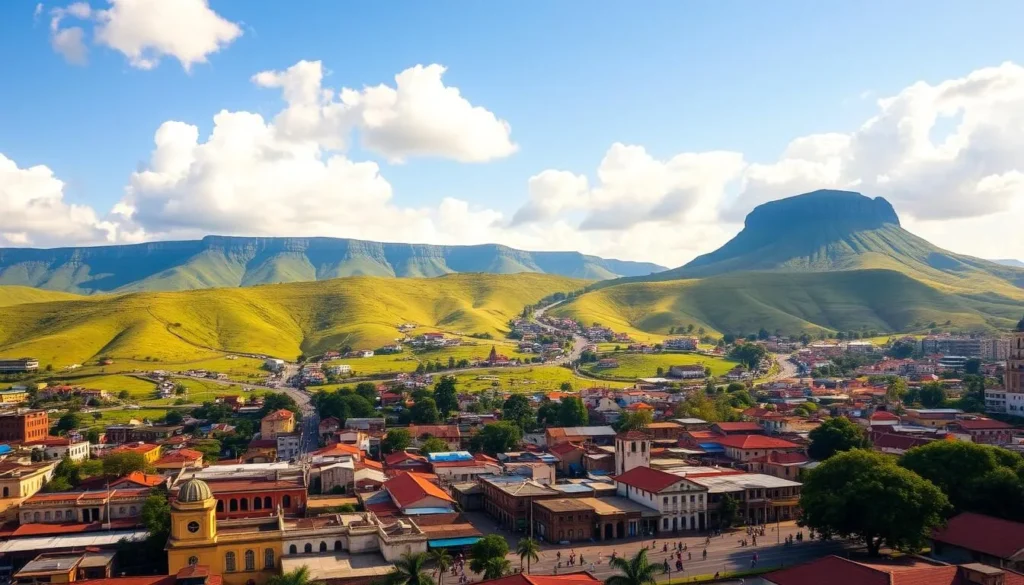
Historical Background
Formerly known as Sá da Bandeira, Lubango was established in 1885 as a major settlement site for the colonial Portuguese. The city‘s history is deeply rooted in its colonial past, with settlers arriving from Madeira. The Portuguese recognized the region‘s agricultural potential due to its favorable climate, leading to the development of unique farming practices. Over time, Lubango has evolved into an important cultural and economic center in post-independence Angola, making it a significant place to visit.
Best Time to Visit Lubango
Planning a trip to Lubango requires understanding the best time to visit this Angolan gem. Lubango’s climate is characterized by distinct wet and dry seasons, significantly impacting the travel experience.
Seasonal Considerations
Lubango experiences a temperate climate year-round due to its elevation. The dry season, from May to September, is considered the best time to visit. During these months, the weather is pleasant, and the views of the surrounding landscapes are at their clearest.
- The dry season offers optimal conditions for outdoor activities and sightseeing.
- The rainy season, from October to April, brings lush greenery but can make some outdoor activities challenging.
What to Pack
When packing for Lubango, consider the season. For the dry season, bring layered clothing due to temperature fluctuations between day and night. Don’t forget sun protection, comfortable hiking shoes, and a light jacket for cooler evenings.
- Photographers may prefer the early dry season (May-June) for optimal visibility and green landscapes.
- Plan your visit around weekends and Angolan holidays to avoid crowds.
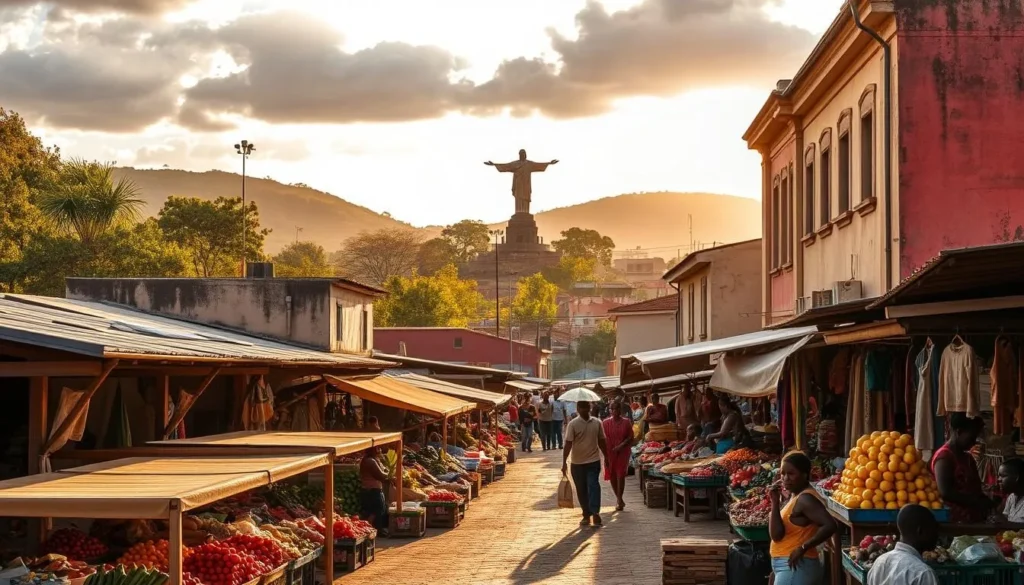
How to Get to Lubango
Getting to Lubango is convenient, thanks to its well-connected international airport. Lubango is considered one of Angola’s most important travel hubs, with great connections to other provinces by road and railway.
Flights and Transportation Options
Lubango’s international airport receives flights from Luanda, Angola’s bustling capital, in just two hours. It also offers connections to Windhoek, Namibia, making it accessible for travelers coming from southern Africa. For those with more time, alternative transportation methods include long-distance buses and the rehabilitated Benguela railway, offering a scenic way to see the countryside.
Getting Around the City
Once in Lubango, getting around the city is relatively straightforward. You can use taxis, ride-sharing services, or public transportation. For those wanting to explore surrounding attractions independently, car rental options are available, with improving road conditions in the region. To reach popular attractions outside the city center, such as Tundavala Gap and Serra da Leba, car rentals or guided tours are recommended.
Lubango, Angola: Best Things to Do – Top Picks
As you explore Lubango, you’ll uncover a rich tapestry of experiences that range from visiting iconic statues to witnessing the awe-inspiring beauty of natural wonders. This city, nestled in the Huila province of Angola, is a treasure trove of cultural heritage and natural beauty, making it a must-visit destination for any traveler.
Cristo Rei (Christ the King) Statue
The Cristo Rei statue is one of Lubango’s most iconic landmarks, standing tall at 30 meters atop the 2,130-meter Serra da Chela mountain. Built in 1957 by Portuguese engineer Madeira Frazão Sardinha, this statue is not only a significant historical monument but also a breathtaking viewpoint that offers panoramic views of the city.
Historical Significance and Views
The Cristo Rei statue was designated an Angolan World Heritage site in April 2014, underscoring its cultural and historical importance. Visitors can enjoy stunning views of Lubango from the viewpoint, making it an ideal spot for photography enthusiasts.
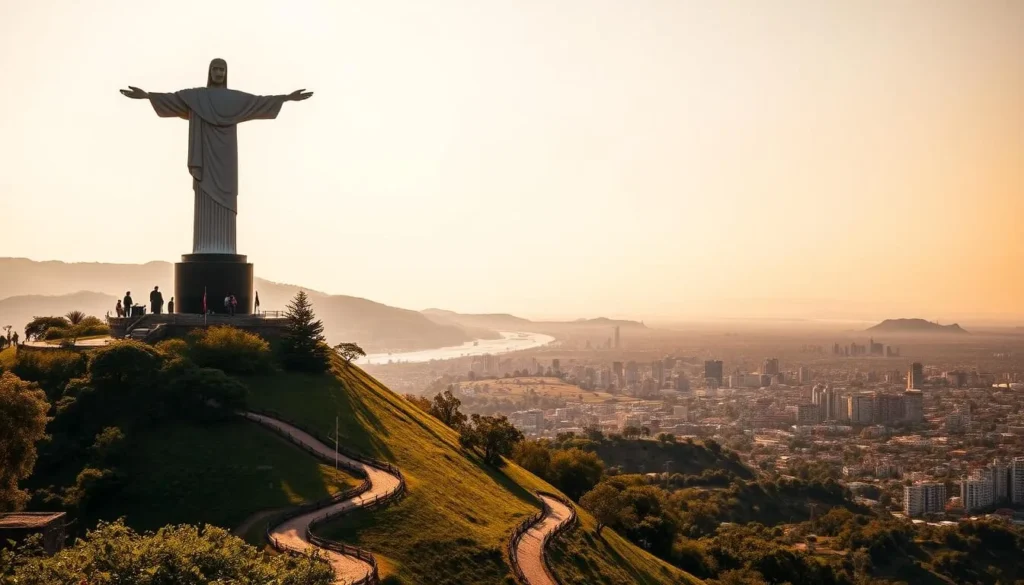
| Attraction | Location | Best Time to Visit |
|---|---|---|
| Cristo Rei Statue | Serra da Chela mountain | Early morning |
| Tundavala Gap | About 10 miles northwest of Lubango | Early morning |
Tundavala Gap
Tundavala Gap is one of Angola’s natural wonders, located about 10 miles northwest of Lubango. This dramatic drop-off from the Huila plateau into steep cliffs is not only a breathtaking natural spectacle but also holds cultural significance for local communities who consider it a sacred place.
Cultural and Natural Significance
The area is rich in biodiversity, with unique flora such as orchids growing in rocky crevices. Visitors can experience both the natural beauty and the cultural heritage of the region, making Tundavala Gap a unique destination.
When planning your visit to these attractions, consider the early morning for the best photography opportunities. Both Cristo Rei and Tundavala Gap offer unforgettable experiences that showcase the best of Lubango.
Serra da Leba: Angola’s Engineering Marvel
Serra da Leba, situated about 50 kilometers from Lubango, is renowned for its spectacular mountain scenery and an iconic road that descends dramatically from the Huila plateau. This region is a must-visit destination for anyone traveling to Angola, offering a mix of natural beauty and engineering ingenuity.
The Famous Switchback Road
The road to Serra da Leba, built in 1970 by the colonial administration, is a marvel of engineering. It features 56 switchback curves as it descends 1,600 meters over a distance of about 20 kilometers from the Huila plateau. This Serra da Leba Pass road was strategically constructed to connect Lubango with the province of Namibe, making it not only a critical transportation route but also one of Angola’s most photographed landmarks.
As you drive down this serpentine road, you’ll be treated to breathtaking views of the surrounding mountains and valleys. The experience is both thrilling and challenging, making it a must-do for adventure seekers.
Best Viewpoints and Photography Tips
For photographers, Serra da Leba offers numerous viewpoints that capture the essence of this engineering feat. To get the best shots, consider visiting during the early morning or late afternoon when the light is soft and golden. Panoramic views of the switchback road are particularly stunning from the mountains alongside it.
- Look for viewpoints that allow you to capture the entire series of switchbacks in one frame.
- Experiment with different angles and perspectives to add depth to your photos.
- Take your time to absorb the scenery and wait for the perfect moment to snap your photo.
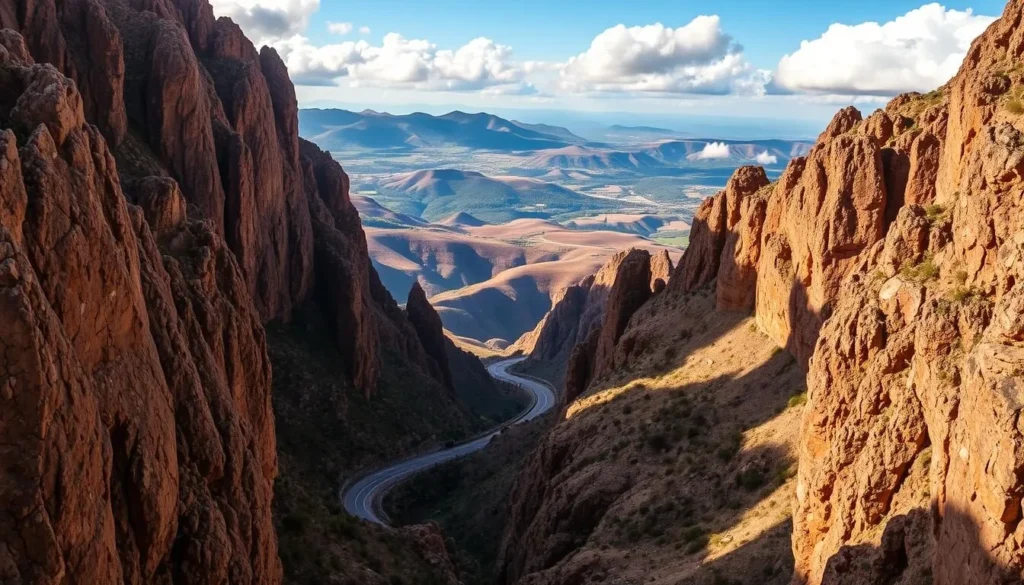
Combining a visit to Serra da Leba with other nearby attractions can make for a fulfilling day trip from Lubango. Whether you’re drawn to the natural beauty of the mountains, the thrill of driving the switchback road, or the panoramic views from the top, Serra da Leba is an unforgettable experience.
Exploring Lubango’s City Center
As you wander through Lubango’s city center, you’ll discover a captivating blend of architectural styles that reflect the city’s rich history and cultural diversity. The city’s urban landscape is a dynamic mix of old and new, with historic buildings standing alongside modern structures.
Colonial Architecture Highlights
Lubango’s city center is adorned with impressive examples of colonial architecture, particularly in the Art Deco style. The São José Cathedral, built in 1939, is a standout example, featuring a striking Gothic-inspired design and an impressive vaulted ceiling. Other notable buildings include the CTT post office and the Odeon Cine theater, which showcase the city’s preserved colonial heritage. As you explore, notice the intricate details and craftsmanship that characterize these historic buildings.

Municipal Market and Shopping
A visit to Lubango’s city center isn’t complete without exploring the vibrant Municipal Market. This bustling hub offers a wide range of goods, from fresh produce and cut flowers to handcrafted baskets and local honey. The market is not only a great place to shop for unique souvenirs but also an opportunity to experience the local culture. To make the most of your visit, arrive early in the morning when the market is most active. Don’t hesitate to engage with the friendly vendors, and be prepared to bargain respectfully.
As you explore the city center, consider a walking route that connects the major architectural highlights, allowing you to stop at local cafes and restaurants along the way. This will give you a comprehensive taste of Lubango’s history, architecture, and daily life.
Natural Wonders Around Lubango
The natural wonders around Lubango are a testament to the country’s diverse and untouched beauty. As you venture out, you’ll discover breathtaking landscapes that showcase Angola’s unique geography.
Huila Plateau
The Huila Plateau is one of Angola’s most impressive natural landscapes, characterized by its elevated terrain and diverse ecosystems. The plateau’s unique geography creates microclimates that support a variety of flora and fauna not found in other parts of the country. You’ll enjoy spectacular views from the many viewpoints around Lubango.
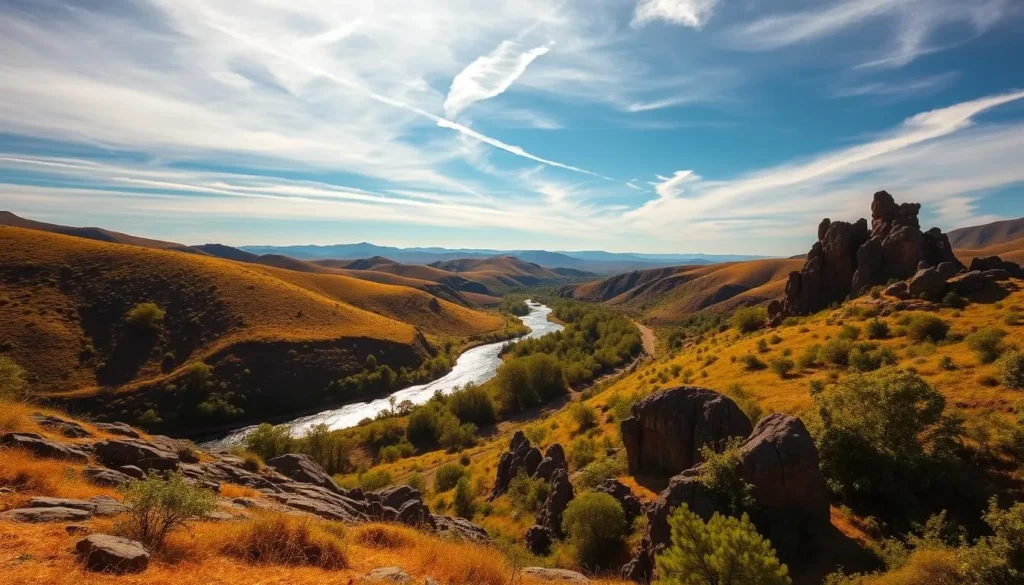
Wildlife and Outdoor Activities
The Huila Plateau and surrounding areas offer numerous opportunities for outdoor activities such as hiking, camping, and photography. You can explore the region’s natural beauty and spot various wildlife, including antelopes, zebras, and a variety of bird species, in protected areas.
| Activity | Location | Best Time |
|---|---|---|
| Hiking | Huila Plateau trails | Early morning |
| Camping | Designated campsites | Anytime |
| Photography | Viewpoints around Lubango | Golden hour |
Conservation efforts are in place to protect these natural wonders. By practicing responsible tourism, you can contribute to preserving the region’s natural beauty for future generations.
Day Trips from Lubango
For travelers looking to experience the full breadth of Angola’s natural beauty, day trips from Lubango offer an exciting way to explore beyond the city. The region around Lubango is rich in diverse landscapes and cultural heritage, making it an ideal base for various excursions.
Namibe Desert
The Namibe Desert, approximately 160 kilometers from Lubango, is a must-visit destination. As you travel along the road, the green highlands gradually give way to the barren sands of one of the world’s oldest deserts. The Mucubal people, inhabitants of this harsh yet beautiful landscape, maintain their traditional lifestyles, offering a unique cultural experience.
One of the highlights of visiting the Namibe Desert is the Lagoa do Curoca, an oasis that stands in stark contrast to the surrounding desert. This natural wonder supports a surprising array of biodiversity, making it a fascinating spot for nature lovers.
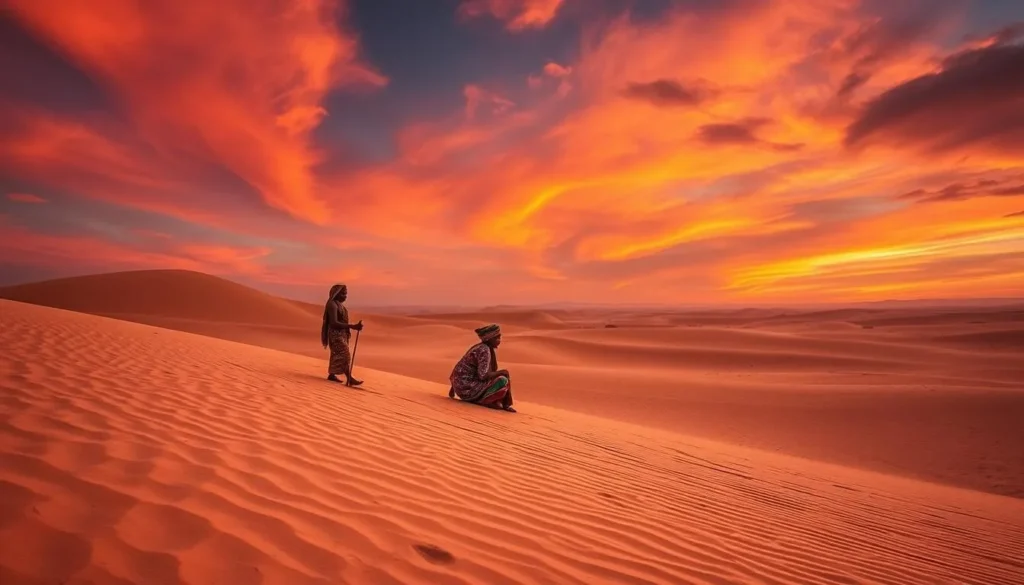
Iona National Park
For wildlife enthusiasts, Iona National Park is Angola’s largest conservation area and a worthwhile longer excursion from Lubango. The park is home to a diverse range of flora and fauna, some of which are found nowhere else in the world.
Organizing a day trip to Iona requires careful planning, including arranging transportation and guided tours. Visitors should be prepared for the adventure with appropriate gear and supplies.
Whether you’re drawn to the dramatic landscapes of the Namibe Desert or the wildlife of Iona National Park, day trips from Lubango offer a convenient way to experience the best of southern Angola without changing your accommodation. With the right planning and guidance, you can make the most of your visit and create unforgettable memories.
Where to Eat and Drink in Lubango
As you explore Lubango, you’ll discover a city where local cuisine tells the story of its people and history. The region’s rich agricultural land and livestock make it an ideal place for a diverse range of culinary delights.
Local Cuisine and Specialties
Lubango’s culinary scene is a delicious fusion of traditional Angolan and Portuguese influences, reflecting the city’s colonial history and cultural diversity. You should try local specialties like muamba de galinha (chicken stew), funje (cornmeal staple), and bacalhau (salted codfish), accompanied by locally produced cheeses and Portuguese-style chorizo. The region’s agricultural abundance contributes to the quality and variety of ingredients available in local markets, making every meal a reflection of the city’s vibrant life.
Best Restaurants and Cafés
For an authentic dining experience, visit restaurants that serve local cuisine. Some great places to try include traditional eateries in the city center, where you can enjoy muamba de galinha and other local dishes. Don’t miss the opportunity to visit the market to see the fresh ingredients that form the basis of local cuisine. Whether you’re dining with locals or exploring on your own, Lubango’s culinary scene is sure to leave a lasting impression on your visit to this charming city.
Conclusion: Why Lubango Should Be on Your Angola Itinerary
For travelers seeking an off-the-beaten-path destination, Lubango offers a unique blend of natural beauty and cultural heritage. As you explore this great place, you’ll discover the Cristo Rei (Christ the King) statue, the dramatic Tundavala Gap, and the engineering marvel of Serra da Leba. Lubango is a city that promises adventure, cultural immersion, and breathtaking landscapes, making it an ideal destination for those looking to experience the authentic Africa.
With its rich history and vibrant culture, Lubango is a must-visit destination in Angola. The city offers a perfect balance of natural beauty, cultural heritage, and adventure opportunities, making it a great place to visit at any time. As Angola continues to develop its tourism infrastructure, now is the ideal time to experience Lubango’s authentic charm.
So, plan your visit to Lubango and immerse yourself in the beauty and culture of this incredible city. Discover why Lubango is quickly becoming a top destination in southern Africa.
The above is subject to change.
Check back often to TRAVEL.COM for the latest travel tips and deals.
